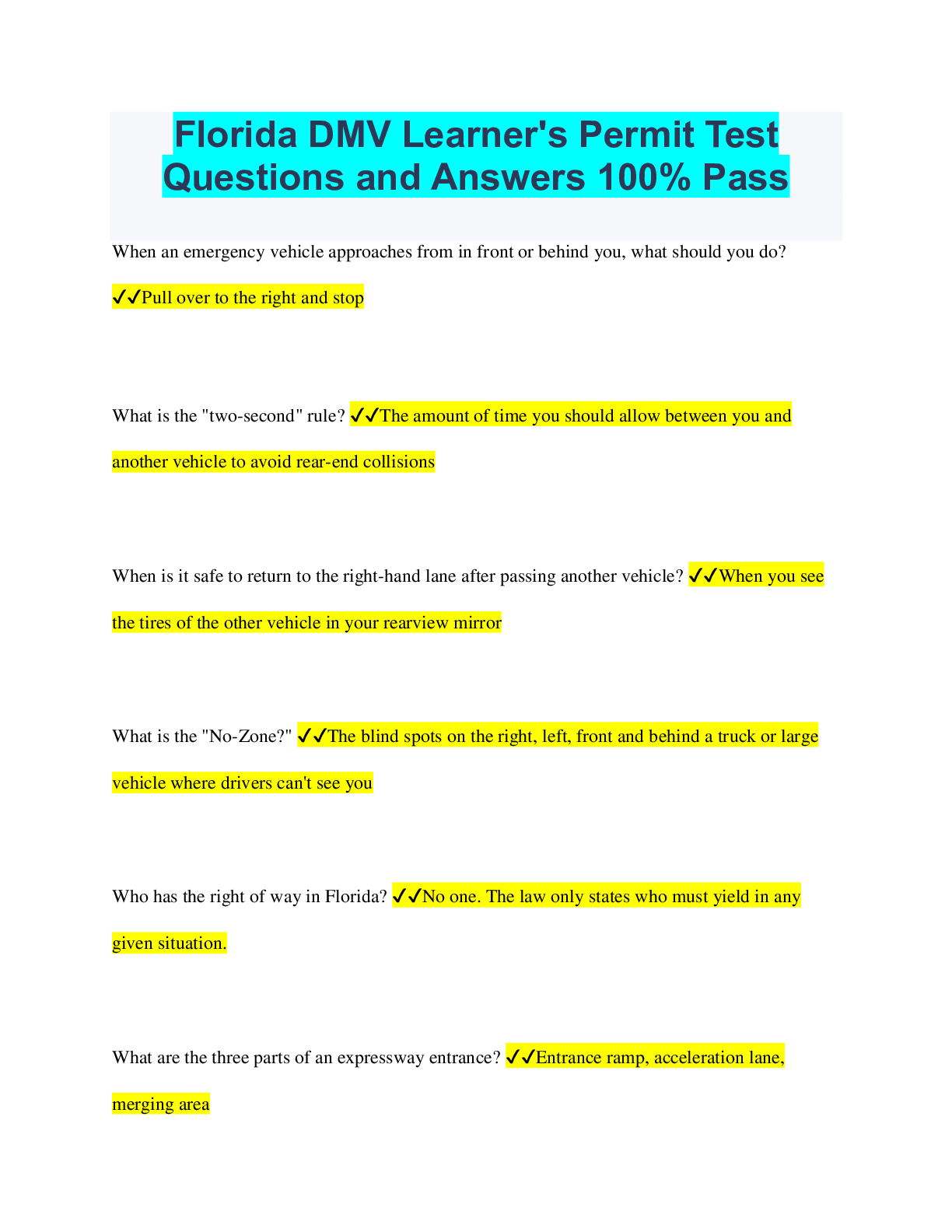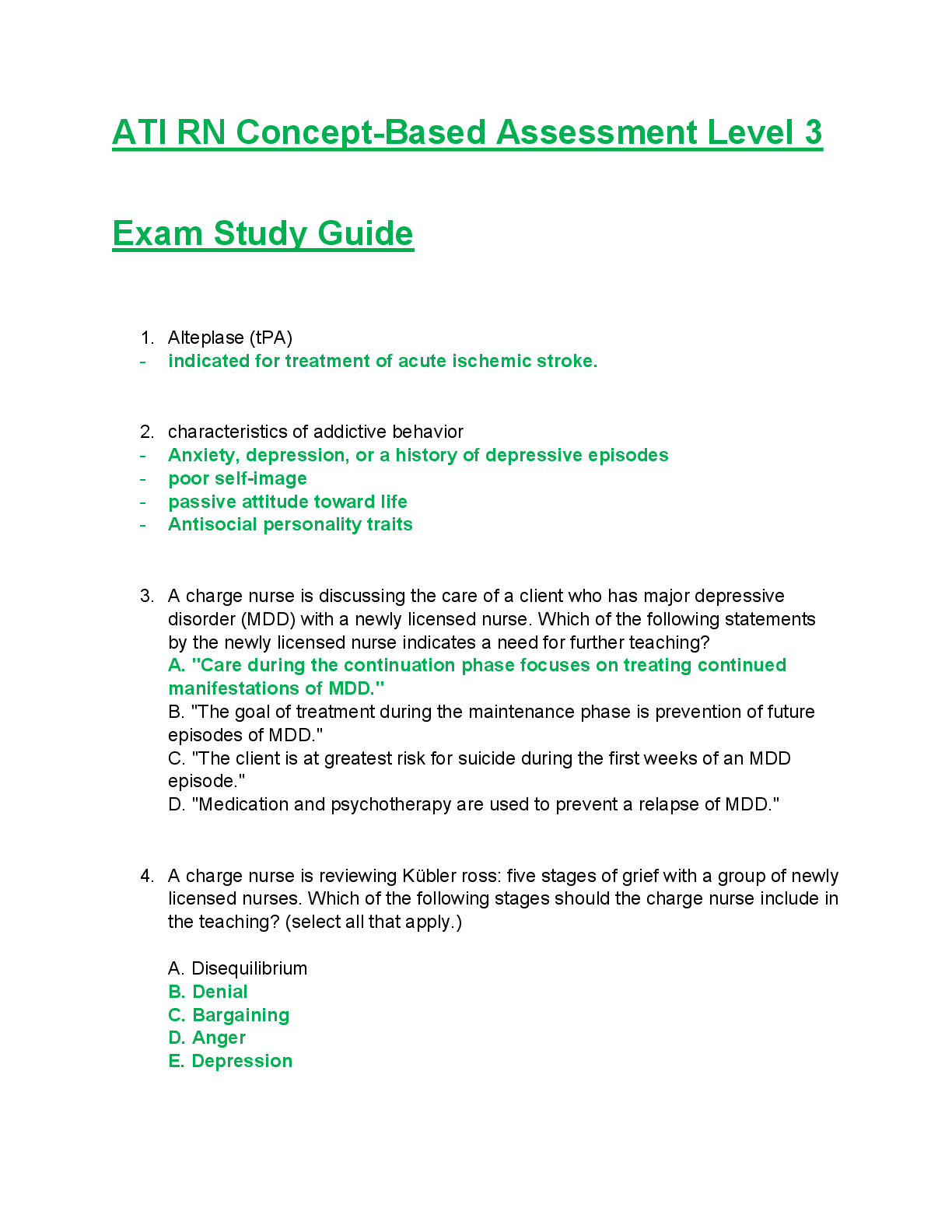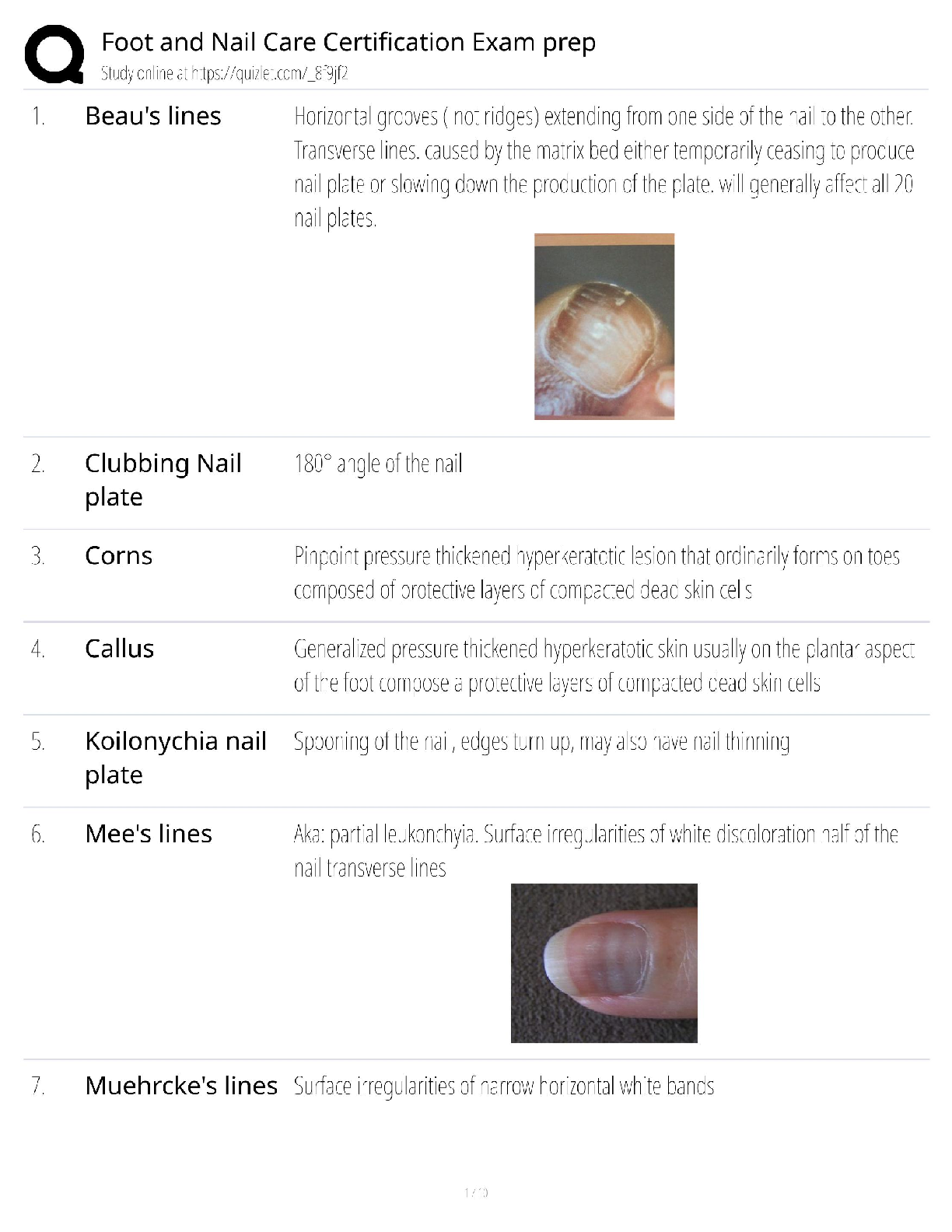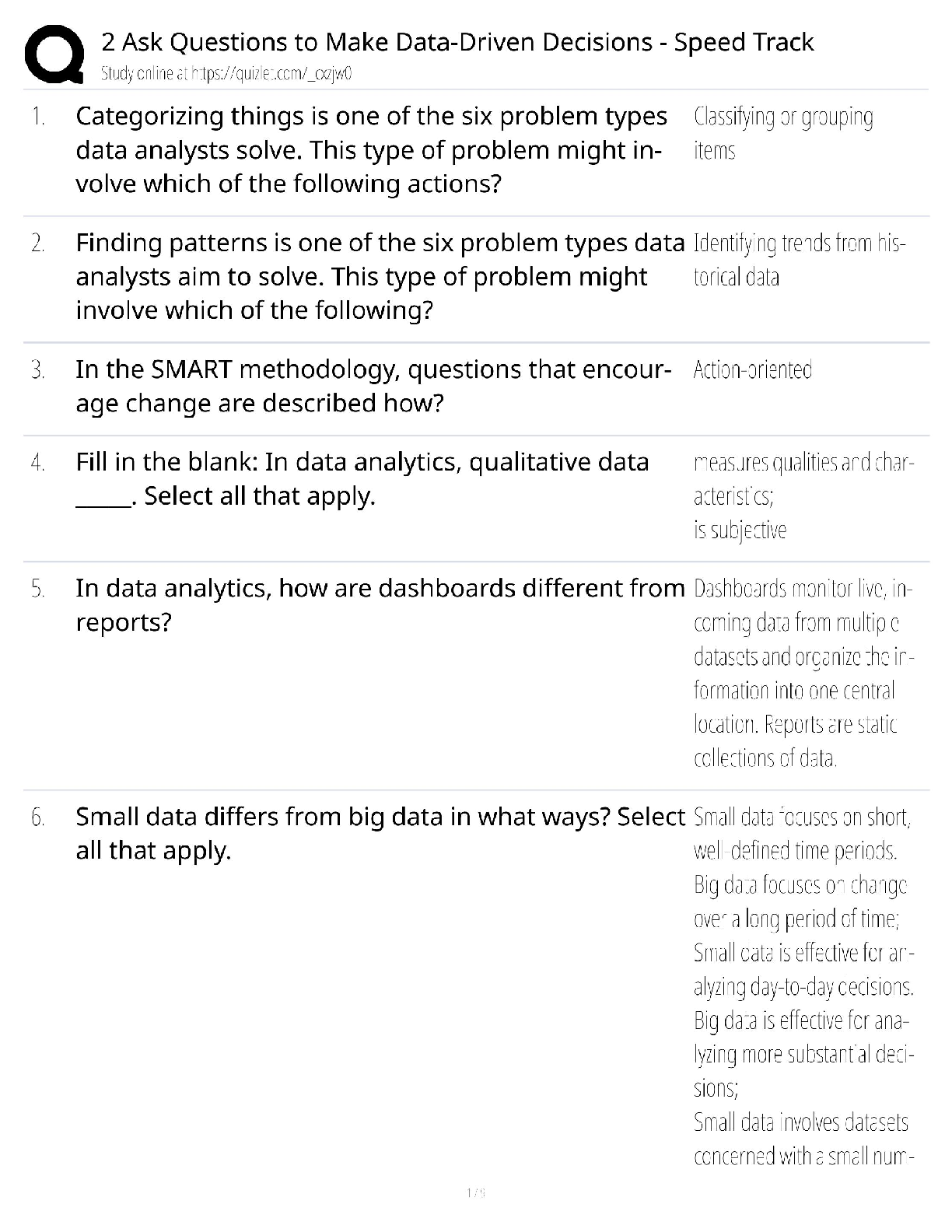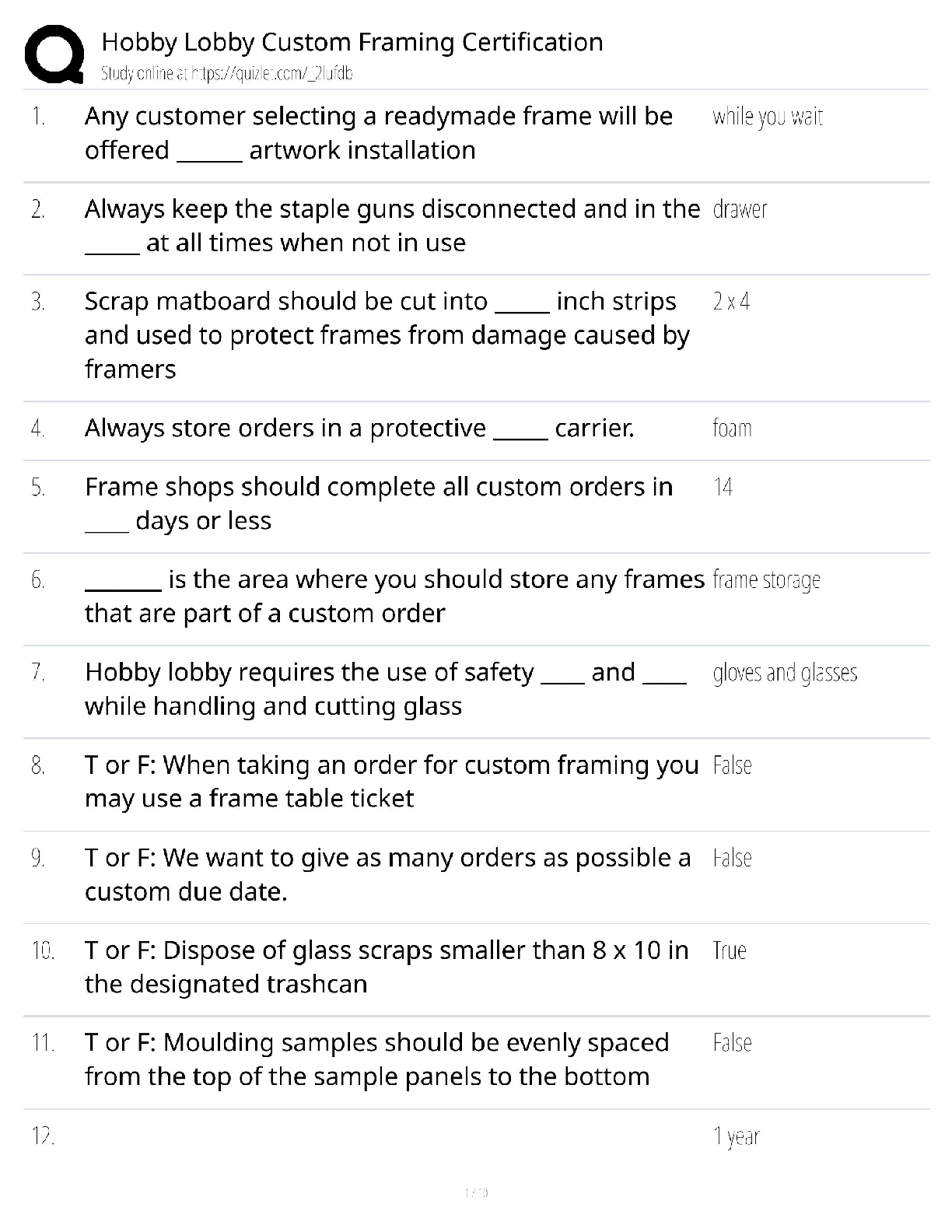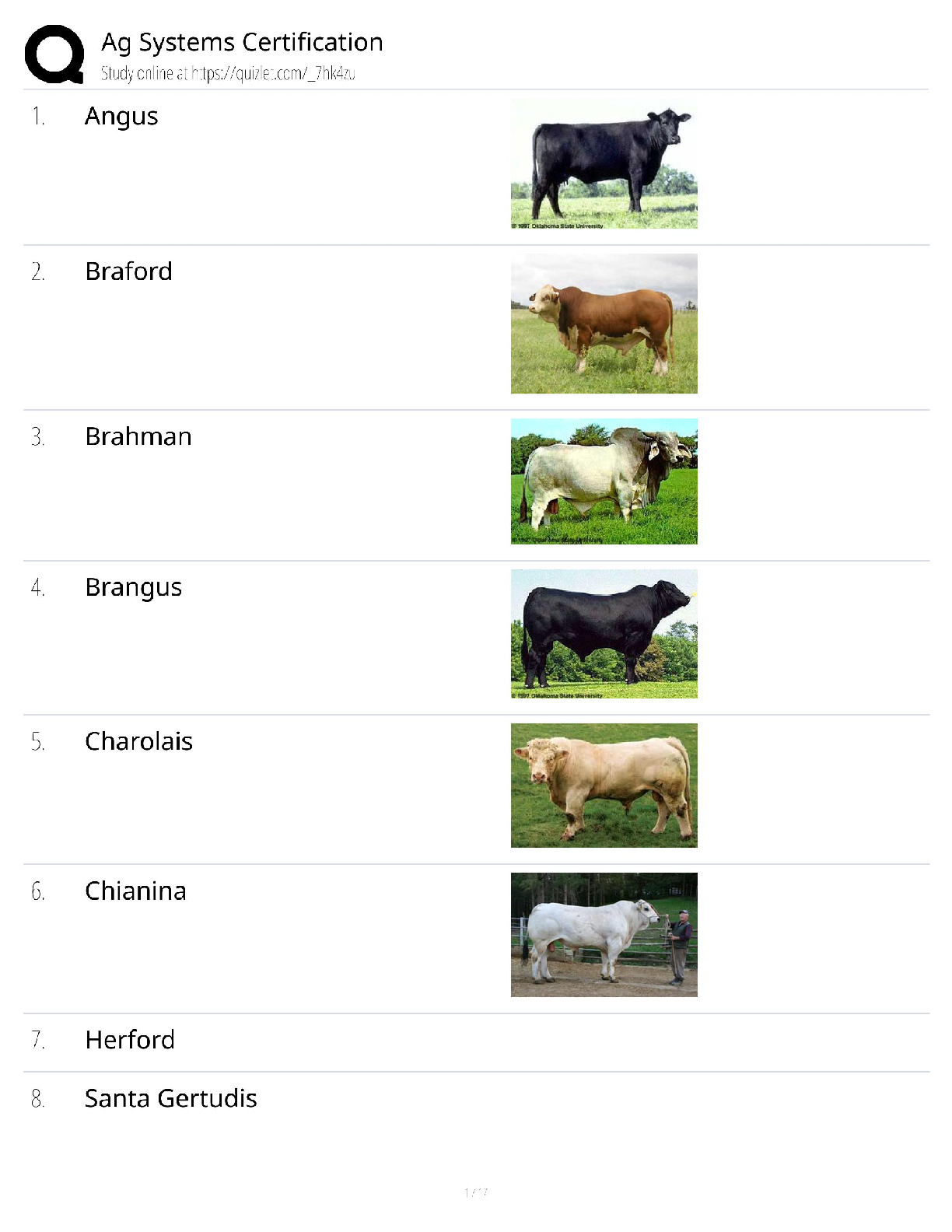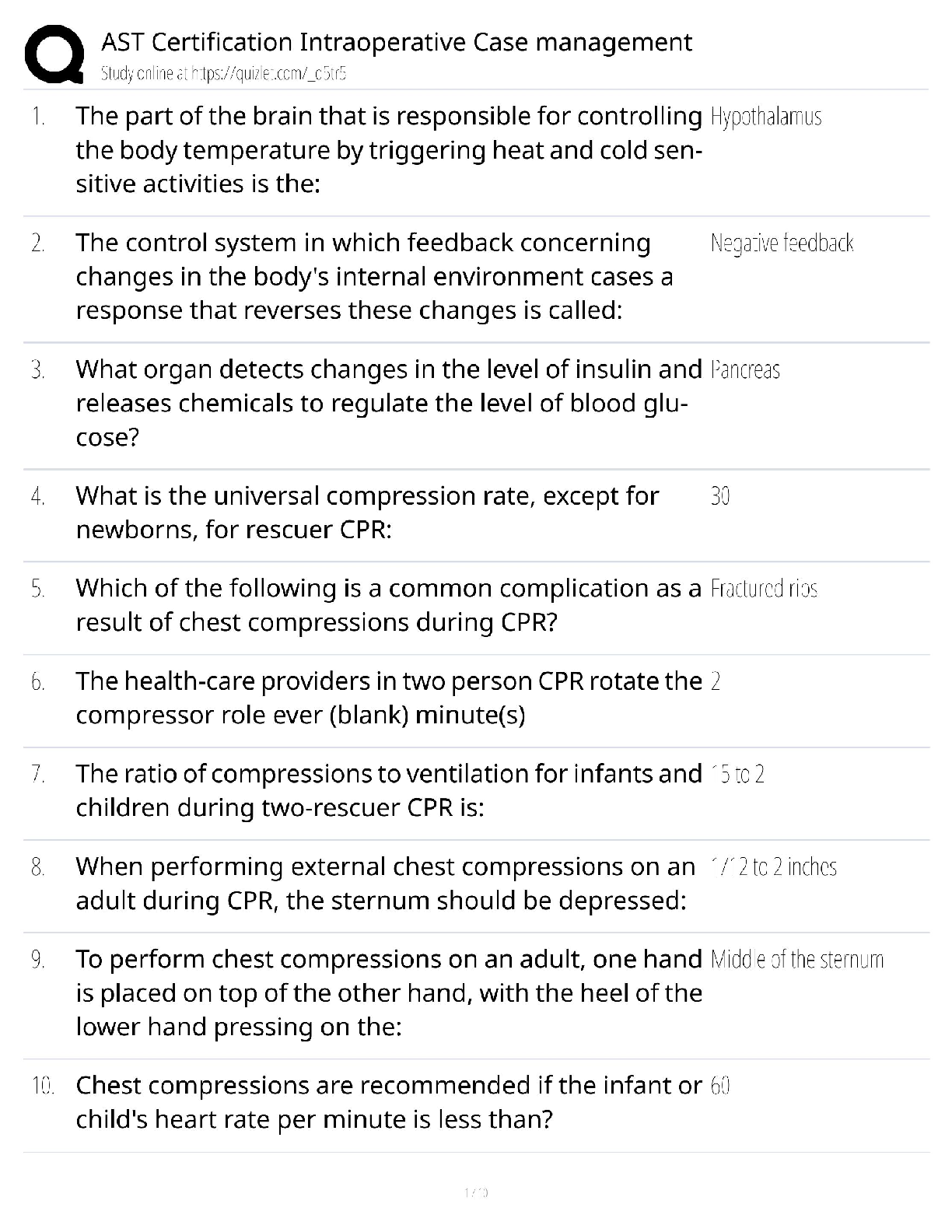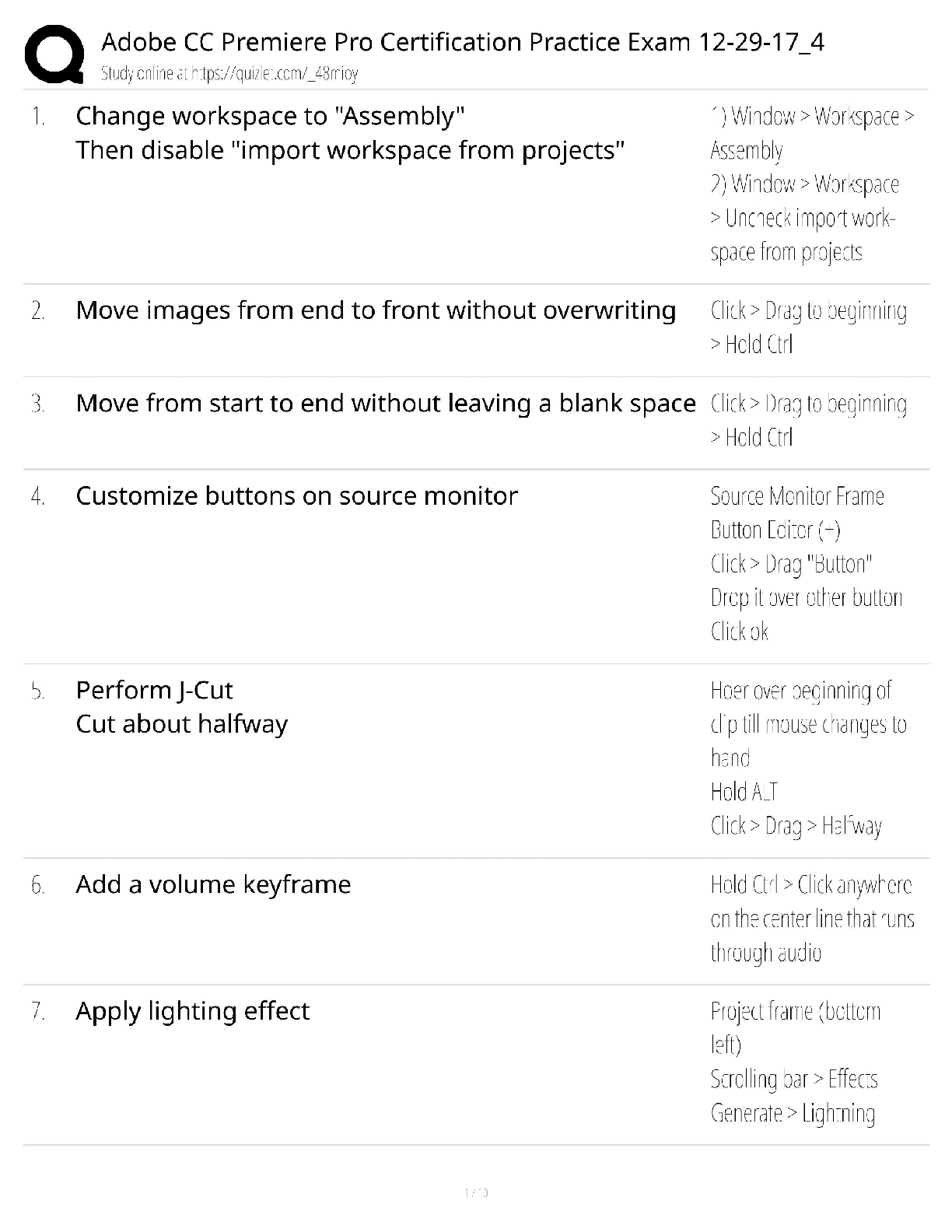*NURSING > QUESTIONS & ANSWERS > Chapter 10: Intervening in Crises. With Answers Explained (All)
Chapter 10: Intervening in Crises. With Answers Explained
Document Content and Description Below
Multiple Choice Identify the choice that best completes the statement or answers the question. ____ 1. A new mother is concerned about her ability to perform her parental role. She is quite anxiou ... s and ambivalent about leaving the postpartum unit. To offer effective client care, a nurse should be familiar with what information about this type of crisis? 1. This type of crisis is precipitated by unexpected external stressors. 2. This type of crisis is precipitated by preexisting psychopathology. 3. This type of crisis is precipitated by an acute response to an external situational stressor. 4. This type of crisis is precipitated by normal life-cycle transitions that overwhelm the client. ____ 2. A wife brings her husband to an emergency department after an attempt to hang himself. He is a full-time student and works 8 hours at night to support his family. He states, “I can’t function any longer under all this stress.” Which type of crisis is the client experiencing? 1. Maturational/developmental crisis 2. Psychiatric emergency crisis 3. Anticipated life transition crisis 4. Traumatic stress crisis ____ 3. A client comes to a psychiatric clinic experiencing sudden extreme fatigue and decreased sleep and appetite. The client works 12 hours a day and rates anxiety as 8/10 on a numeric scale. What long-term outcome is realistic in addressing this client’s crisis? 1. The client will change his type-A personality traits to more adaptive ones by one week. 2. The client will list five positive self-attributes. 3. The client will examine how childhood events led to his overachieving orientation. 4. The client will return to previous adaptive levels of functioning by week six. ____ 4. A high school student has learned that she cannot graduate. Her boyfriend will be attending a college out of state that she planned to attend. She is admitted to a psychiatric unit after overdosing on Tylenol. Which is the priority nursing diagnosis for this client? 1. Ineffective coping R/T situational crisis AEB powerlessness 2. Anxiety R/T fear of failure 3. Risk for self-directed violence R/T hopelessness 4. Risk for low self-esteem R/T loss events AEB suicidal ideations ____ 5. After threatening to jump off of a bridge, a client is brought to an emergency department by police. To assess for suicide potential, which question should a nurse ask first? 1. “Are you currently thinking about harming yourself?” 2. “Why do you want to harm yourself?” 3. “Have you thought about the consequences of your actions?” 4. “Who is your emergency contact person?” ____ 6. An involuntarily committed client, when offered a dinner tray, pushes it off the bedside table onto the floor. Which nursing intervention should a nurse implement to address this behavior? 1. Initiate forced medication protocol. 2. Help the client to explore the source of anger. 3. Ignore the act to avoid reinforcing the behavior. 4. With staff support and a show of solidarity, set firm limits on the behavior. ____ 7. A college student, who was nearly raped while jogging, completes a series of appointments with a rape crisis nurse. At the final session, which client statement most clearly suggests that the goals of crisis intervention have been met? 1. “You’ve really been helpful. Can I count on you for continued support?” 2. “I work out in the college gym rather than jogging outdoors.” 3. “I’m really glad I didn’t go home. It would have been hard to come back.” 4. “I carry mace when I jog. It makes me feel safe and secure.” ____ 8. A despondent client who has recently lost her husband of 30 years tearfully states, “I’ll feel a lot better if I sell my house and move away.” Which nursing response is most appropriate? 1. “I’m confident you know what’s best for you.” 2. “This may not be the best time for you to make such an important decision.” 3. “Your children will be terribly disappointed.” 4. “Tell me why you want to make this change.” ____ 9. An inpatient client with a known history of violence suddenly begins to pace. Which additional client behavior should alert a nurse to escalating anger and aggression? 1. The client requests prn medications. 2. The client has a tense facial expression and body language. 3. The client refuses to eat lunch. 4. The client sits in group with back to peers. ____ 10. What is the best nursing rationale for holding a debriefing session with clients and staff after a take-down intervention has taken place in an inpatient unit? 1. Reinforce unit rules with the client population. 2. Create protocols for the future release of tensions associated with anger. 3. Process client feelings and alleviate fears of undeserved seclusion and restraint. 4. Discuss the situation that led to inappropriate expressions of anger. ____ 11. A nursing instructor is teaching about the Roberts’ Seven-stage Crisis Intervention Model. Which nursing action should be identified with Stage IV? 1. Collaboratively implement an action plan. 2. Help the client identify the major problems or crisis precipitants. 3. Help the client deal with feelings and emotions. 4. Collaboratively generate and explore alternatives. Multiple Response Identify one or more choices that best complete the statement or answer the question. ____ 12. Which of the following nursing statements or questions represent appropriate communication to assess an individual in crisis? (Select all that apply.) 1. “Tell me what happened.” 2. “What coping methods have you used, and did they work?” 3. “Describe to me what your life was like before this happened.” 4. “Let’s focus on the current problem.” 5. “I’ll assist you in selecting functional coping strategies.” ____ 13. Which of the following interventions should a nurse use when caring for an inpatient client who expresses anger inappropriately? (Select all that apply.) 1. Maintain a calm demeanor. 2. Clearly delineate the consequences of the behavior. 3. Use therapeutic touch to convey empathy. 4. Set limits on the behavior. 5. Teach the client to avoid “I” statements related to expression of feelings. ____ 14. Which of the following are behavior assessment categories in the Broset Violence Checklist? (Select all that apply.) 1. Confusion 2. Paranoia 3. Boisterousness 4. Panic 5. Irritability Other 15. Order the following stages of Roberts’ Seven-stage Crisis Intervention Model. ________ Deal with feelings and emotions. ________ Generate and explore alternatives. ________ Rapidly establish rapport. ________ Psychosocial and lethality assessment. ________ Identify the major problems or crisis precipitants. ________ Follow up. ________ Implement an action plan. Completion Complete each statement. 16. A sudden event in one’s life that disturbs homeostasis, during which usual coping mechanisms cannot resolve the problem, can be defined as a ______________________. [Show More]
Last updated: 3 years ago
Preview 1 out of 11 pages
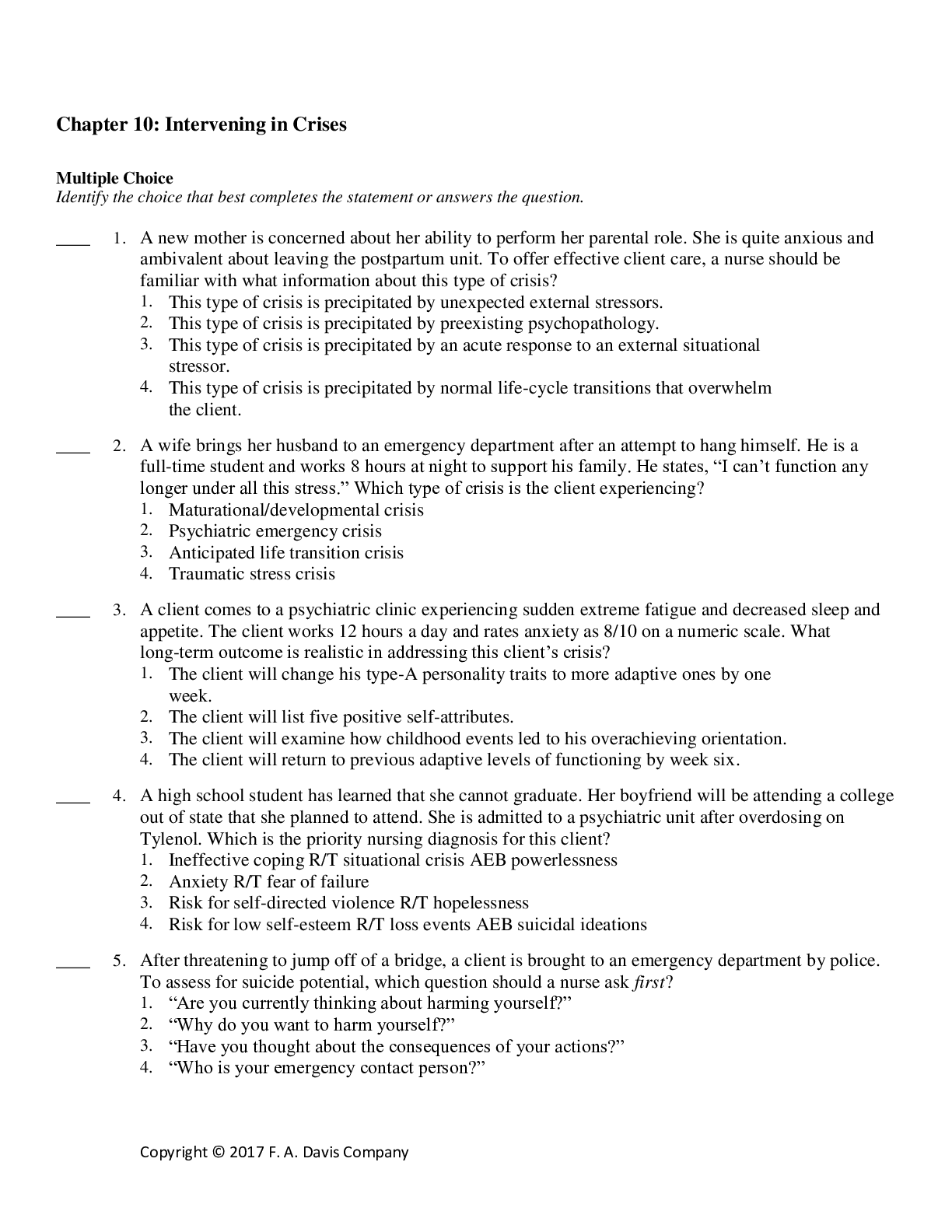
Buy this document to get the full access instantly
Instant Download Access after purchase
Buy NowInstant download
We Accept:

Reviews( 0 )
$6.00
Can't find what you want? Try our AI powered Search
Document information
Connected school, study & course
About the document
Uploaded On
Jan 27, 2020
Number of pages
11
Written in
All
Additional information
This document has been written for:
Uploaded
Jan 27, 2020
Downloads
0
Views
151


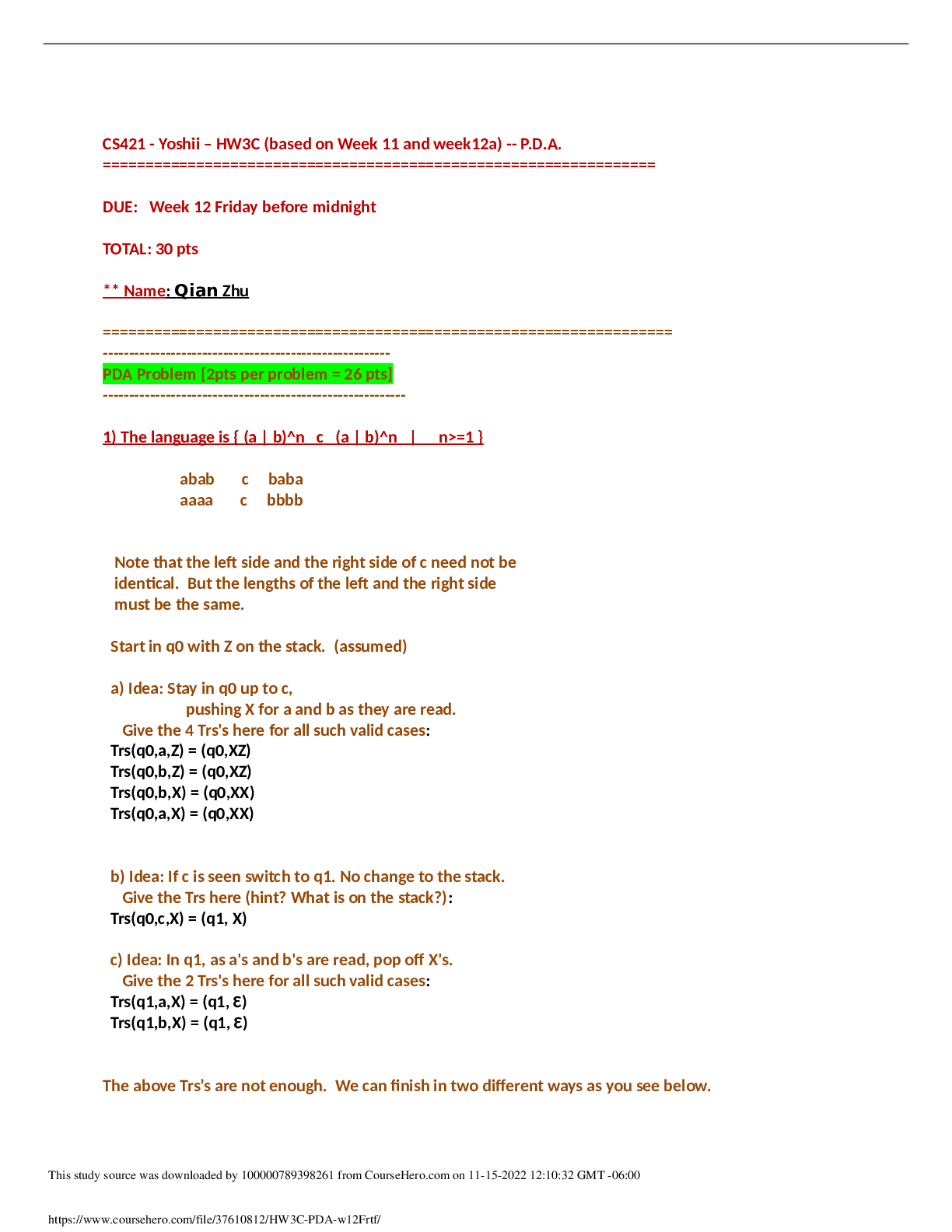


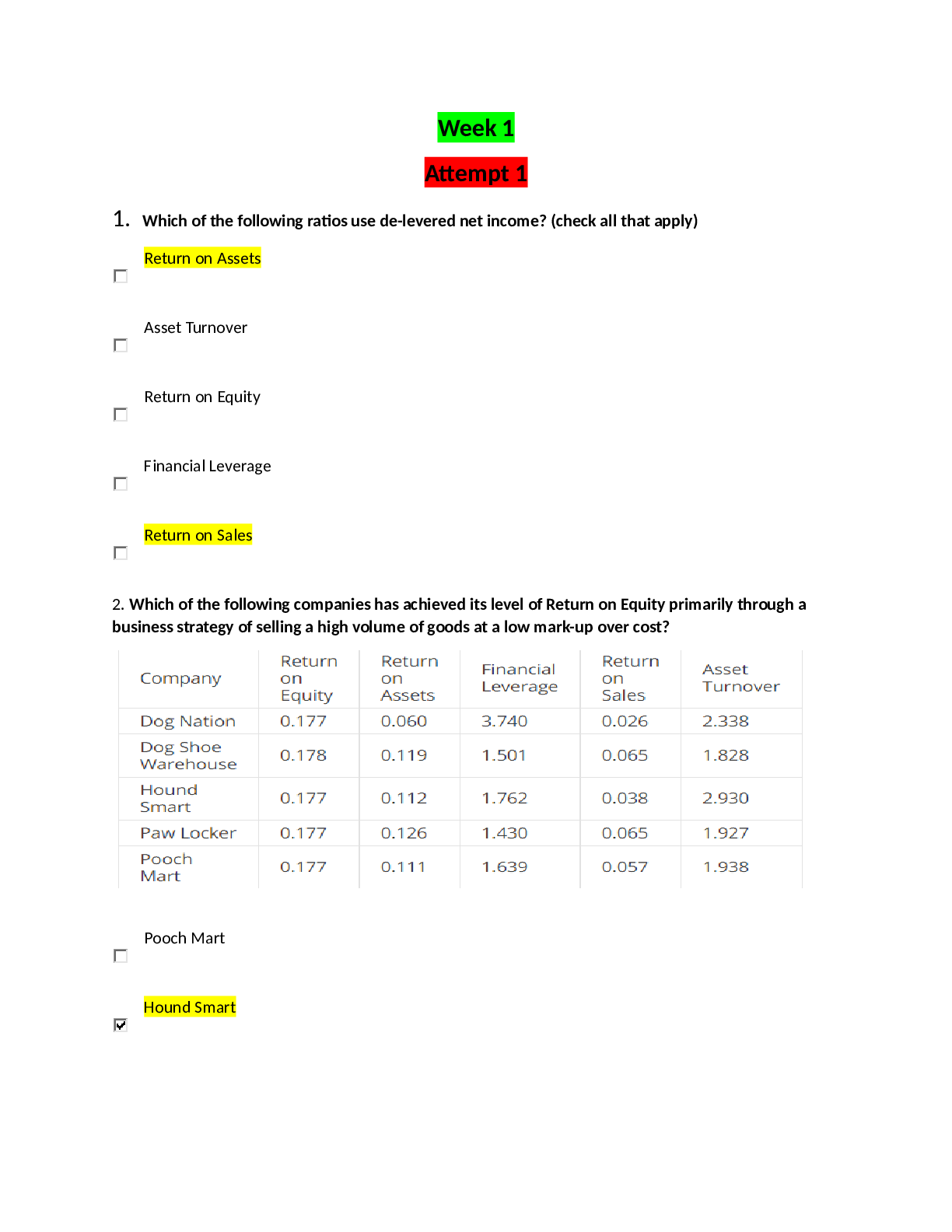
.png)
.png)
.png)
.png)
.png)
.png)
.png)
